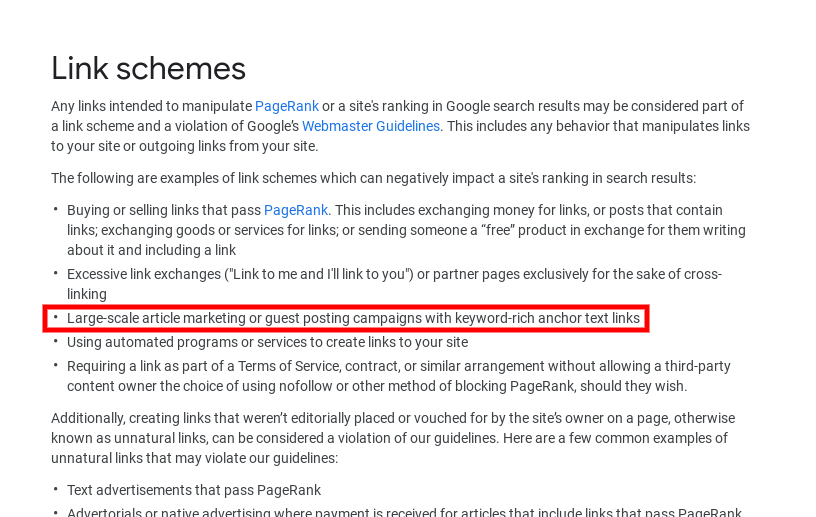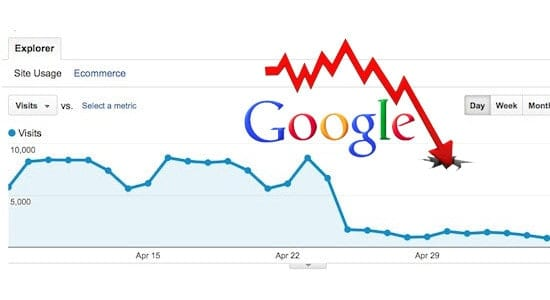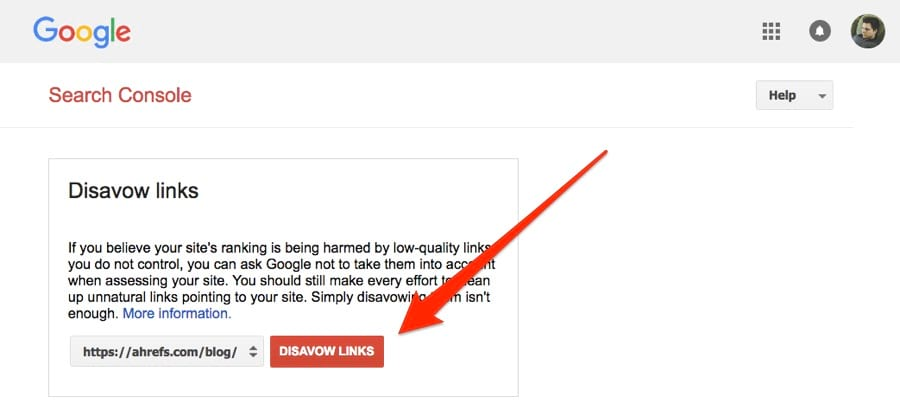One of the most commonly misunderstood aspects of search engine optimization is link building.
Incorporating link building in your SEO campaigns will boost your rankings and bring you more visitors.

This is because when people link to your site, it shows Google that your site is of value to others. Google tries to prioritize valuable and useful content, and inbound links are one of the metrics they use to determine whether other people see a site as valuable.
However, link building has evolved from its simpler origins. Way back in the beginning, Google used the quantity of inbound links a site had to determine its value.
Eventually, after people figured out they could build spam sites with the mass amounts of links for the purposes of gaming the algorithm, all that changed.
Google started to value the quality of a site’s inbound links as opposed to the quantity. Not only that, but they started penalizing sites that used spam methods to try and trick the algorithm.
Nowadays, getting 200 links from low-quality sources can hurt your site, while getting a single link from a site like Forbes or any high-quality blog will do wonders for your rankings.
That’s why it is so important to do link building correctly and avoid risks.
Here are seven common risks that are involved in a link building campaign.

As mentioned, Google isn’t too happy about people using spam methods to game the algorithm. They want to continue providing their searchers with content that is actually valuable.
Getting linked to from high-quality sites will definitely boost your rankings. Some of these links can be organic, while others can be obtained through various methods, such as guest posts, paid promotions, and outreach campaigns.
Link building, when done correctly and with the proper precautions, will definitely boost your SEO rankings. However, if done incorrectly, you run the risk of having your site penalized.
Here is a list of “link schemes” that go against Google’s policies.
The most common risk that sites will face is having their site drop in the search results.
This drop can happen gradually and over time. It can also happen quickly – one day, your site might suddenly be pushed from page one to page five of the search results.
An even harsher penalty, which isn’t as common, is having your site de-indexed by Google. This usually happens if you have been clearly violating their policies with blatantly spammy methods.
It’s important to understand the difference between a drop in the rankings caused by Google’s algorithm and a manual Google penalty.
Google’s algorithm is constantly weighing different factors to determine a site’s value. One of these is the quality of inbound links.
Low-quality inbound links will negatively affect your SEO score and page rank. Sometimes, the negative effect might come suddenly due to a Google algorithm update such as Panda or Penguin.
An example of this is how Google started punishing sites with more than 80 percent, then 65 percent, and finally 50 percent spammy inbound links after the Penguin update.
A change caused by an algorithm may not seem as scary as a manual penalty, but it is often harder to figure out what exactly caused the drop in rankings.
If Google’s bots detect spammy activity, a human moderator will look at the situation and decide whether or not to penalize your site. This is a lot harder to fix.
You will be notified of manual penalties via a message in the Google Search Console.
In either case, you risk losing a considerable amount of traffic.

Many people hire an SEO agency to conduct a link building campaign for them.
A common issue with this is that not all of these agencies are going to be upfront and transparent about their link building strategies. Many are secretive about what exactly they are doing and how they are getting their links.
When hiring someone to do your link building for you, you need to ensure that they are doing it in a way that is either entirely organic or are using tested methods that really work (which is still risky, as things always change when it comes to Google’s algorithms).
If you want to be completely safe, you will focus on only providing value in exchange for links. In other words, write high-quality guest posts in order to get a link back to your site.
Another tactic is finding where you were mentioned without a link and then politely requesting the site owner to simply add your link.
Yet another tactic is finding broken links – links that come as a 404 or expired site – and then notifying the site owner. You can then suggest that they link to your own blog post that discusses the same topic.
“Grey-hat” SEO techniques are a little less reliable and involve more risk.
One such tactic would be setting up a Private Blog Network to create multiple links back to your site. You can create an outreach campaign and pay owners of blogs that do have high-quality content for links.
Ultimately, the type of link building campaign you set up will be up to you. However, you need to make sure that the SEO agency you are working with is on board with what YOU want to do.
Another common problem is lack of honesty. Who is really conducting the link building campaign?
Some SEO agencies and contractors will go ahead and outsource your link building campaign to a sub-contractor who will end up providing a service of lesser quality. This is a never ending cycle where you can never be sure who exactly is doing the work.
That’s why it is so important to ensure that the people doing the work are the ones you actually hired.
Moz has a good guide on how to properly choose an SEO agency. It starts with defining your goals and then finding an SEO agency that will be willing to work with you on those goals.
Establishing trust with an SEO agency is crucial. Always ask for referrals from other business owners who have seen an improvement in rankings and an increase in traffic after the SEO agency set up a link building campaign.
Ezine Articles, one of the more popular article submission sites. If you plan to use article submission sites, make sure you choose one that has strict submission guidelines in place that uphold its site value.
If you’re building links as part of a strategy, you need to ensure that the links are coming from high-quality sites and blogs.
If Google notices that there are many low-quality sites linking to you, it can set off alarm bells and red flags.
As mentioned, Google focuses more on the quality of the sites linking to you rather than the quantity.
A good link building campaign will include guest posts on and reachouts to high-quality blogs in your industry.
A poor link building campaign will consist of sending in SEO content to article directories and paying people on Fiverr to add a link to your site from their blog.
There are several different kinds of low-quality sites you generally want to stay away from when building links.
The first is sites that have a large number of outbound links and not much informational content. This can also include article submission sites and directories.
Google can tell if the sole purpose of a site is to link to other sites. This kind of “bridge site” or “link farm” has no value of its own and won’t transfer any “ranking juice” to you through its links.
Even worse are sites that do not appear in the search results. Google has usually banned and deindexed these sites for a reason, and getting links from these sites can be harmful.
In general, you want to avoid building links from sites that have low value, little content, or are not yet established.
For example, new sites that have almost nothing published and article directories do not make quality link building material.
There’s another kind of “low-quality” site in link building: Sites that have nothing to do with the topic of your blog.
The entire point of link building is to show that your blog/site is valuable enough for people to link to it organically. Blogs that cover similar topics do this all the time.
When a site that discusses your topic or keyword links to you, it shows Google that your page has relevant information on that keyword. This will result in higher rankings.
If, however, your site is about digital marketing and you get a link from a website talking about joint health supplements, the effect on your rankings won’t be that great. If you keep getting a large number of links from unrelated sites, you may even drop in the rankings.

Many link building contractors will have a network of sites set up so that they can use them to link to a specific blog they are trying to boost.
This can fall in what’s often called the “grey-hat” SEO category (not as spammy as black-hat methods such as link farms, but not quite organic).
This is often referred to as a PBN (Private Blog Network).
The truth is that this strategy CAN work, if done correctly. There are four main metrics for determining a site’s value, and backlinks play a role in that.
These four metrics, Domain Authority, Page Authority, Trust Flow, and Citation Flow all use links to help them determine a site’s value. These metrics have been set up by Moz and Majestic.com.
However, at the end of the day, nobody is truly privy to Google’s algorithm. In addition, Google has been known to manually penalize sites that use a PBN strategy.
If you do decide to use a PBN, you must take several things into account.
First, the linking sites must have some value of their own. This is often accomplished by purchasing a domain name that has just recently expired and already has a high pagerank.
A domain name that is about to expire may have an even higher page rank.
A bot can be used to crawl the web for expired domains that are linked to from important sites; these domains can then be purchased to be included in a PBN.
Some pages of content may then be added.
However, the biggest risk with a PBN is that if Google can notice a trail between the sites you set up, they will be up on your tricks.
This can happen if the IP addresses of the PBN sites are similar or if they are all being hosted on a single account or server.
In order for the links to look organic, there must be no traceable connection between the sites.
Link building can be used to boost your rankings for specific keywords which in the long run helps adding footprints to your site.
One way of doing this is to get links from blog posts that focus on similar keywords and topics.
However, to get more specific results, you want the anchor text of the links to your site to contain the keyword you want to target.
However, if there are too many links with the same anchor text, it will set off alarm bells at Google, as it won’t look organic. Some link building contractors will do it anyways.
There are several types of keywords you can use as an anchor text of links to your site according to Moz. An exact match keyword is the keyword you are targeting word-for-word; use these sparingly.
Partial-match keywords are not word-for-word. These should be used as well.
Partial match keywords can include Latent Semantic Indexing keywords. LSI keywords are not word-for-word or even the same words but are rather based on human speech – how we interchange different words with similar meanings.
You should also use branded anchor text links (such as “Amazon” linking to amazon.com) and naked links (such as “amazon.com” linking to amazon.com). These both look natural and will help boost your rankings.
Stay away from “keyword stuffing” your anchor texts. In addition, avoid using generic anchor texts, such as “click here.” These have less SEO value.
A good anchor text strategy is to mix up your anchor text keywords. Not each link has to contain your keyword in the anchor text, and even the ones that do can contain keywords that have a similar meaning but are not the exact same wording.
In addition, if an image is linking to your site, use a keyword, partial-match keyword, or brand name in the alternative text section of the image.
You need to know exactly where your links are coming from.
Not only that, but you should have the ability to get them removed if necessary. (This obviously doesn’t apply to links that were put up by others organically, which won’t hurt you).
Google has an option for disavowing links, but it is often not as effective as having them removed entirely.
To disavow your links, use the Google’s disavow links tool. You may need to upload a file of the links you want to disavow.
To find those links, you can use a tool to find all backlinks pointing to your site, such as the Google Search Console or Ahrefs, and then compile a file of links that you think are harmful. Ahrefs has a good guide for how to go about disavowing links.
Google’s disavow links tools should not be your backup option, such as if you don’t know where your links are or are being hit with spam links by a competitor, not your original risk management plan. As mentioned, it is more effective to have them removed.
In Google’s own words, “If you believe your site’s ranking is being harmed by low-quality links you do not control, you can ask Google not to take them into account when assessing your site. You should still make every effort to clean up unnatural links pointing to your site. Simply disavowing them isn’t enough.”
You should always know where your links are coming from so that you can remove them easily.
Otherwise, you will have to spend a lot of effort finding out the contact information of the owners of the sites linking to you and asking them to remove your links. You may not be able to find that information, and even if you do, they may not comply.
Finally, if you are going to venture into link building, you MUST have a risk management strategy. You need to have a backup plan in case something goes wrong.
What will you do if you suspect that your rankings are dropping as a result of bad backlinks? How will you recover and mitigate the damage?
Not building links you can’t remove and not relying on a single method of building backlinks or a single backlink source are just some examples of a good risk management strategy.
Search Engine Land recommends that you constantly monitor and update your link building strategy so that you are constantly up-to-date. It is also important to stay tuned to SEO news and any Google algorithm updates that are announced.
In conclusion, building backlinks is important for boosting your website’s pagerank and SEO rankings.
Refer to this case study which is great example of how SEO, primarily link building when done right, does wonders to your rankings and sales.
However, it’s important to avoid risks by sticking to white-hat techniques and focusing on obtaining high-quality backlinks.